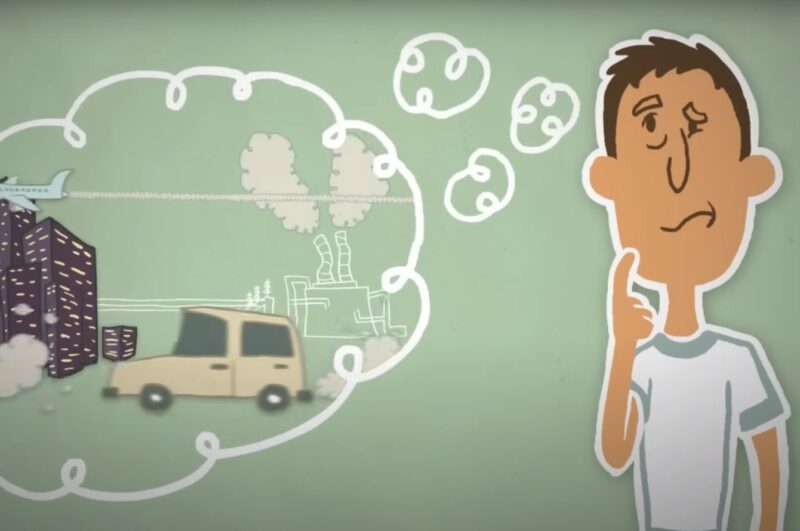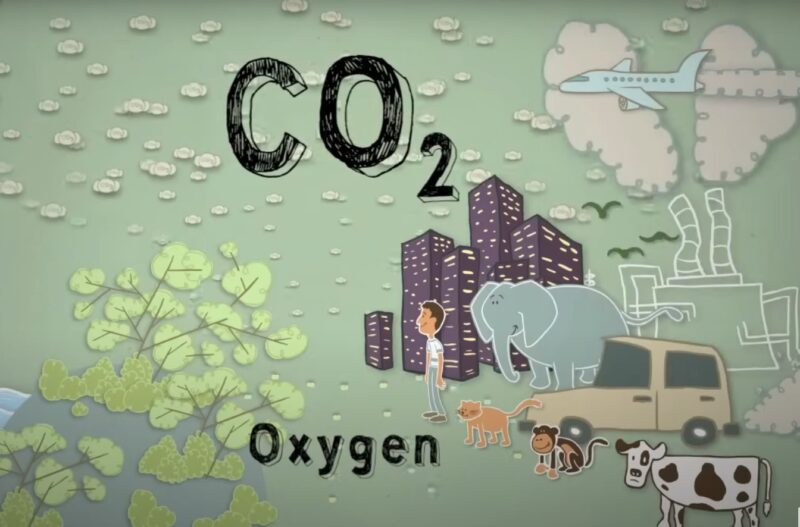In a world teeming with gases of various kinds, carbon dioxide (CO2) holds a special place.
Commonly associated with the air we exhale and the bubbles in our favorite fizzy drinks, this gas plays a pivotal role in Earth’s ecosystem and our daily lives.
But when it comes to its smell, there’s a fascinating story to tell—one that’s not only about chemistry but also about human perception.
[su_note note_color=”#ededed”]
Key Highlights
- Carbon dioxide is odorless to humans because it doesn’t bind to our olfactory receptors, but some animals can detect it.
- CO2 plays a crucial role in Earth’s ecosystem, aiding in photosynthesis, climate regulation, and the carbon cycle.
- Technology, not the human nose, is used to detect CO2 levels, ensuring safety in various environments.
- Managing CO2 emissions is vital for mitigating climate change, involving individual efforts and global policies.[/su_note]
The Essence of Carbon Dioxide’s Smell

Curiously, carbon dioxide doesn’t have a smell—at least, not in the way most of us are used to thinking about smells.
Our noses are finely tuned instruments, capable of detecting a myriad of scents, from the refreshing zest of a lemon to the comforting warmth of freshly baked bread.
Yet, when it comes to CO2, our olfactory system draws a blank. Here’s why:
- Lack of Smell: Carbon dioxide is a colorless and, under normal conditions, odorless gas. It doesn’t trigger the olfactory receptors in our nose that are responsible for detecting smells.
Why Can’t We Smell Carbon Dioxide?

Having knowledge about the science of smell, or olfaction, sheds light on our inability to detect CO2 through our noses.
Humans can smell thanks to olfactory receptors, which respond to chemical molecules in the air.
However, CO2 doesn’t bind to these receptors in a way that sends a signal to our brain identifying a specific odor.
Sensing CO2—A Different Mechanism
Although we can’t smell CO2 through traditional means, our bodies have developed a unique way to sense its presence.
High levels of carbon dioxide can trigger a physiological response, such as an increase in breathing rate.
This reaction is not due to its “smell” but rather its effect on our body’s CO2 levels.
We also recently covered the topic of CO2 Lewis structure, so make sure to check it out.
The Role of Carbon Dioxide in Nature
Carbon dioxide, despite its invisibility to our sense of smell, is crucial for life on Earth. Its roles are multifaceted:
- Photosynthesis: Plants use CO2, along with sunlight, to make their food, releasing oxygen as a byproduct.
- Climate Regulation: CO2 is a greenhouse gas, playing a significant role in regulating Earth’s temperature.
- Carbon Cycle: It’s a key component of the global carbon cycle, moving between the atmosphere, oceans, and living organisms.
How Do We Detect Carbon Dioxide?
Since we can’t rely on our sense of smell, detecting carbon dioxide relies on technology.
Devices like CO2 detectors monitor levels in various environments, from submarines to spacecraft, ensuring they stay within safe limits.
These tools are essential for preventing CO2 buildup in enclosed spaces, which can lead to health issues like dizziness, headaches, and even more severe conditions.
Carbon Dioxide in Everyday Life
Despite its lack of scent, CO2 is everywhere:
- Beverages: It gives soda and sparkling water their fizz.
- Fire Extinguishers: CO2 is used in certain types because it can suffocate flames without leaving a residue.
- Plant Growth: Indoor growers and greenhouses may enrich their air with CO2 to promote plant growth.
Can Anything Smell Like Carbon Dioxide?
While carbon dioxide itself doesn’t have a smell, certain situations associated with high levels of CO2 can produce detectable odors.
For instance, in poorly ventilated areas where CO2 accumulates, you might smell other byproducts of human presence or activities, such as body odor or musty smells.
These are not the smell of CO2 but rather indicators of an environment where CO2 levels could be elevated.
Keeping Air Fresh and Safe

Managing CO2 levels is crucial for maintaining healthy indoor environments. Ventilation plays a key role in this process, ensuring that air circulates properly and that CO2 does not build up to unhealthy levels.
Indoor plants can also help, as they absorb CO2 and release oxygen, naturally purifying the air.
Tips for Maintaining Good Air Quality
- Increase Ventilation: Open windows or use ventilation systems to bring in fresh air.
- Monitor CO2 Levels: Consider using a CO2 detector, especially in spaces without much airflow.
- Grow Indoor Plants: They can help reduce CO2 levels naturally.
The Invisible Impact of CO2
Even though we can’t smell carbon dioxide, it has a significant impact on our planet’s climate and our health. Its role as a greenhouse gas means it has a direct effect on global warming and climate change.
The increasing concentration of CO2 in the Earth’s atmosphere, mainly due to burning fossil fuels and deforestation, traps more heat, leading to a warmer planet.
What Can We Do?
Mitigating the impact of carbon dioxide on climate change requires concerted efforts:
- Reduce Emissions: Limiting the use of fossil fuels and increasing reliance on renewable energy sources can help reduce CO2 emissions.
- Plant Trees: Since plants absorb CO2, reforestation and afforestation are vital strategies.
- Conserve Energy: Simple actions like turning off lights when not in use and using energy-efficient appliances can make a difference.
Carbon Dioxide and Human Perception

Our inability to smell carbon dioxide might seem like a limitation, but it’s a reminder of the diverse ways humans interact with their environment.
Other senses and technologies come into play, allowing us to perceive and respond to the world in ways beyond just smell.
Learning from CO2
The story of carbon dioxide challenges us to think about our relationship with the natural world. It highlights the importance of understanding and monitoring the substances in our environment, even those we cannot see or smell.
Through science and innovation, we can better protect our planet and ensure a healthier future.
FAQs
Can animals smell carbon dioxide?
Yes, some animals, like mosquitoes, can detect carbon dioxide as part of locating their prey.
Does carbon dioxide taste like anything?
Carbon dioxide itself is tasteless, but when dissolved in water, it forms carbonic acid, giving carbonated drinks a slightly tangy taste.
Is carbon dioxide more common indoors or outdoors?
CO2 levels are typically higher indoors due to limited ventilation and the presence of people exhaling.
Can plants “smell” carbon dioxide?
Plants cannot “smell” in the human sense, but they do absorb carbon dioxide through their leaves as part of photosynthesis.
Do higher CO2 levels affect weather patterns?
Yes, higher levels of CO2 in the atmosphere can influence climate patterns, contributing to global warming and climate change.
Are there natural sources of carbon dioxide?
Yes, natural sources include volcanic eruptions, respiration processes in living organisms, and the decomposition of organic matter.
Final Words
Carbon dioxide’s lack of smell reminds us that not all gases are detectable by our noses, yet this doesn’t diminish their importance in our lives and the environment.
By understanding CO2’s role and how to manage its levels in our surroundings, we can ensure healthier living spaces and a deeper appreciation for the invisible forces that shape our world.

